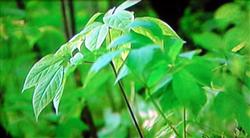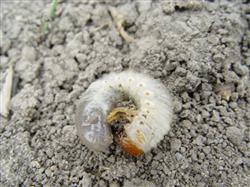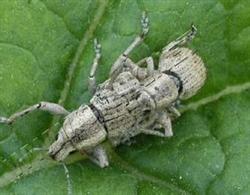Prevention and control of ginseng infestation

The insect is known as the golden needle worm, also known as the iron filament, the golden tooth rake, the yellow caterpillar and so on, and its adult is also called the kowtow worm. It belongs to Coleoptera, Conchidae. The harm to ginseng is the most serious. In general, the soil begins to move after thawing, mainly harming the underground rhizomes of ginseng with larvae, generally from ginseng roots to the surface of the earth at the level of 10 cm, and most of them do harm at 5-8 cm. Living habits of golden needles often take 3-5 years to complete the first generation, overwintering with all instar larvae and adults. Golden needle bugs prefer relatively low temperatures to high temperatures. In spring, the ground temperature reaches 9 ℃ at 10 cm underground, and the activity begins. In summer, when the soil temperature is above 22 ℃, the larvae sneak into the soil for summer, and the peak period of damage to ginseng is from the first ten days of June to the middle of July. The control of golden needle worms usually begins at 9 ℃ of ground temperature, so it is best to use 15% Avi during this period. Chlorpyrifos (1000G) each generation 6-7 curtain ditch is applied or sprinkled on the pool surface, and then rake it into the ground 3-5 cm; or with lattice (crazy flash) each bottle 7-8 curtain, top rain sprayed on the pool surface, with Rain Water.
- Prev

Control methods of ginseng grub
The grub is the larva of the big beetle. It is a gluttonous pest, which can endanger continuously. In general, the soil temperature of 10 cm in the surface layer of soil begins to move at 5 ℃ in spring, and the most suitable soil temperature is 13-18 ℃ on average. When it is higher than 23 ℃, it gradually transfers to the deep soil layer, and then moves to the upper soil when the soil temperature drops to its suitable active temperature in autumn. Daily life.
- Next

Control methods of Ginseng Grey Weevil
The big gray weevil, also known as the weevil and Tula donkey, is 9-12 mm long, grayish yellow or grayish black and densely covered with gray-white scales. The head and beak are densely covered with golden glowing scales. The pests occurred this year mainly feed on young stems and leaves on the surface during seedling emergence, causing great harm. After being alarmed, he pretended to die and landed on the ground in the early morning and evening. ...
Related
- Fuxing push coffee new agricultural production and marketing class: lack of small-scale processing plants
- Jujube rice field leisure farm deep ploughing Yilan for five years to create a space for organic food and play
- Nongyu Farm-A trial of organic papaya for brave women with advanced technology
- Four points for attention in the prevention and control of diseases and insect pests of edible fungi
- How to add nutrient solution to Edible Fungi
- Is there any good way to control edible fungus mites?
- Open Inoculation Technology of Edible Fungi
- Is there any clever way to use fertilizer for edible fungus in winter?
- What agents are used to kill the pathogens of edible fungi in the mushroom shed?
- Rapid drying of Edible Fungi

